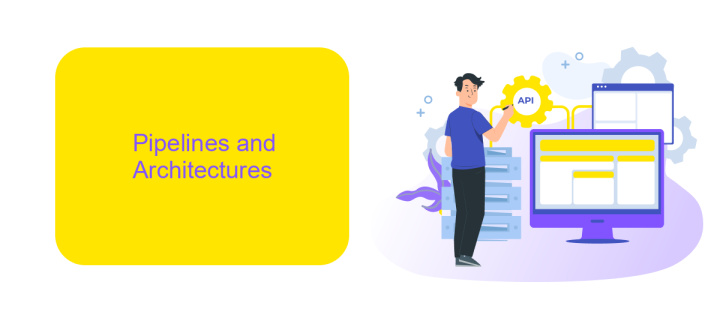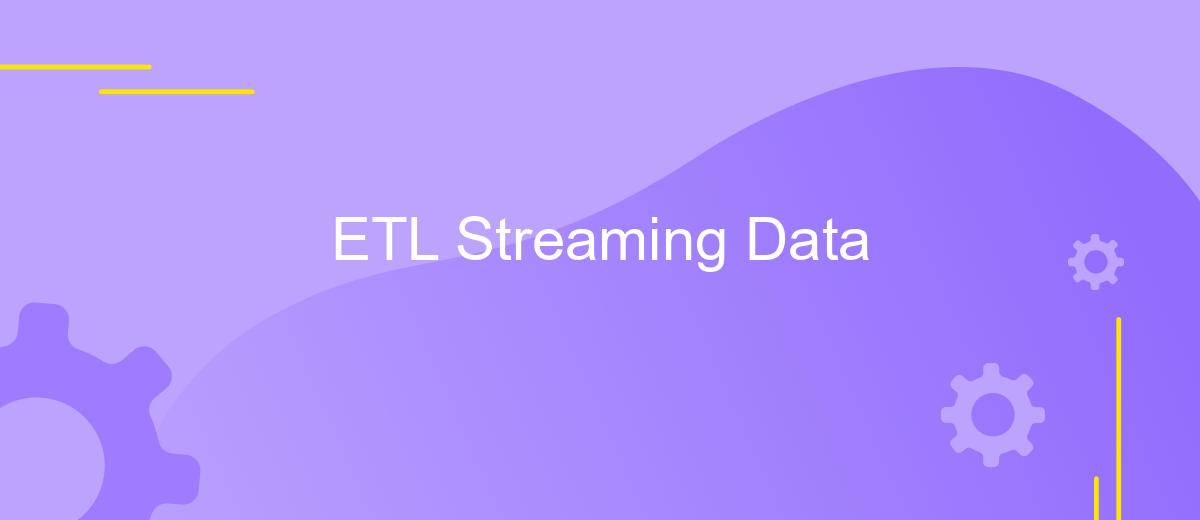ETL Streaming Data
ETL (Extract, Transform, Load) streaming data is revolutionizing the way organizations handle real-time data processing. Unlike traditional batch processing, ETL streaming enables continuous data flow, allowing businesses to make immediate, data-driven decisions. This article explores the fundamentals of ETL streaming, its benefits, and how it can be implemented to enhance operational efficiency and responsiveness in today's fast-paced digital landscape.
Introduction
ETL (Extract, Transform, Load) streaming data is a crucial component in modern data processing and analytics. Unlike traditional ETL processes that handle batch data, streaming ETL deals with continuous data flows, enabling real-time data integration and analysis. This approach is essential for businesses that require up-to-the-minute insights to make informed decisions and stay competitive in the market.
- Real-time data extraction from various sources
- Continuous transformation and enrichment of data
- Immediate loading into data warehouses or analytics platforms
One of the services that facilitate seamless ETL streaming data integration is ApiX-Drive. This platform provides a user-friendly interface for setting up integrations between multiple data sources and destinations without the need for extensive coding. By leveraging ApiX-Drive, businesses can streamline their data workflows, ensuring that critical data is always up-to-date and readily available for analysis. This capability is especially valuable in industries such as finance, e-commerce, and IoT, where real-time data processing is paramount.
Pipelines and Architectures

Building efficient ETL streaming data pipelines involves orchestrating various components to ensure data flows smoothly from source to destination. These pipelines must handle real-time data ingestion, transformation, and loading processes. Key architectural elements include data sources, stream processing engines, message brokers, and storage solutions. Properly designed pipelines can handle high throughput and low latency, ensuring timely and accurate data processing.
To streamline integration and automation within these architectures, services like ApiX-Drive can be invaluable. ApiX-Drive facilitates the connection of disparate data sources and applications, automating data transfer and transformation tasks. This service supports a wide range of integrations, reducing the complexity of setting up and maintaining ETL pipelines. By leveraging such tools, organizations can enhance their data workflows, ensuring seamless and efficient data processing across various platforms.
Benefits and Challenges

ETL Streaming Data offers numerous benefits, including real-time data processing, which allows businesses to make quicker, data-driven decisions. This capability is crucial for industries that rely on timely information, such as finance and e-commerce. Additionally, streaming ETL can handle large volumes of data with low latency, ensuring that data is processed and available almost instantaneously.
- Real-time Data Processing: Enables immediate insights and actions.
- Scalability: Efficiently handles large volumes of data.
- Low Latency: Ensures quick data availability.
- Improved Decision-Making: Facilitates faster, data-driven decisions.
However, there are also challenges to consider. Implementing ETL streaming requires robust infrastructure and can be complex to set up. Ensuring data quality and consistency in real-time can be difficult. Integrating various data sources smoothly is another challenge, but services like ApiX-Drive can simplify this process by automating integrations and ensuring seamless data flow. Despite these challenges, the benefits often outweigh the difficulties, making ETL streaming a valuable approach for modern data management.
Tools and Technologies

When dealing with ETL streaming data, selecting the right tools and technologies is crucial for efficient data processing and real-time analytics. Modern ETL solutions offer a variety of features to handle large volumes of data, ensuring seamless integration and transformation.
One of the key aspects of ETL streaming is the ability to integrate various data sources effortlessly. Tools like Apache Kafka and Apache Flink are popular choices for their robust streaming capabilities and scalability. Additionally, managed services such as AWS Kinesis and Google Cloud Dataflow provide cloud-based solutions that simplify the deployment and management of streaming ETL pipelines.
- Apache Kafka: Distributed event streaming platform for high-throughput data pipelines.
- Apache Flink: Stream processing framework for real-time analytics.
- AWS Kinesis: Managed service for real-time data processing in the AWS cloud.
- Google Cloud Dataflow: Fully managed service for stream and batch data processing.
- ApiX-Drive: Service for easy integration and automation of data flows between various platforms.
By leveraging these tools, organizations can build robust ETL streaming pipelines that ensure data is processed efficiently and in real-time. The choice of technology depends on specific use cases, scalability requirements, and existing infrastructure, making it essential to evaluate each option carefully.
Case Studies and Examples
One notable case study involves a retail company that implemented an ETL streaming data solution to enhance their real-time inventory management. By integrating streaming data from various sources such as point-of-sale systems, online orders, and supplier databases, they were able to maintain an up-to-the-minute view of their inventory levels. This integration was facilitated by ApiX-Drive, a service that simplifies the process of connecting different data sources. As a result, the company significantly reduced stockouts and overstock situations, leading to improved customer satisfaction and increased sales.
Another example is a financial services firm that utilized ETL streaming data to monitor and analyze market trends in real-time. By leveraging streaming data from stock exchanges, news feeds, and social media, the firm could make more informed trading decisions quickly. ApiX-Drive played a crucial role in this setup by enabling seamless data integration across various platforms. This real-time analytics capability allowed the firm to react promptly to market changes, thereby maximizing their investment returns and minimizing risks.
FAQ
What is ETL Streaming Data?
How does ETL Streaming differ from traditional ETL?
What are the common use cases for ETL Streaming?
How can I implement ETL Streaming for my business?
What are the challenges of ETL Streaming?
Apix-Drive is a universal tool that will quickly streamline any workflow, freeing you from routine and possible financial losses. Try ApiX-Drive in action and see how useful it is for you personally. In the meantime, when you are setting up connections between systems, think about where you are investing your free time, because now you will have much more of it.

